18650 battery test 2011
A 2012 test can be found here

In this test I have measured many different 18650 batteries and collected the data in bar graphs and curves. The above picture shows most of the cells I have tested.

Capacity: Measured capacity at 0.2 ampere discharge rate (This is the average from the two tested cells). This is not measured the same way as the manufacture specified capacity, i.e. it is not supposed to be exactly the same value.
Top: SB: Small button top, LB: Large button top, Flat: Flat top (See here for more information).
Bottom: A protected battery has a PCB at the bottom, on some batteries this has been strengthen with a metal plate.
Protected: Does the battery have a protection circuit? IMR batteries do not.
Max. Dis.: Maximum allowed discharge rate. This is only listed for batteries where it is specified, for all other batteries assume 2C.
Source: Where I got the battery.
Date: The month I got the battery.
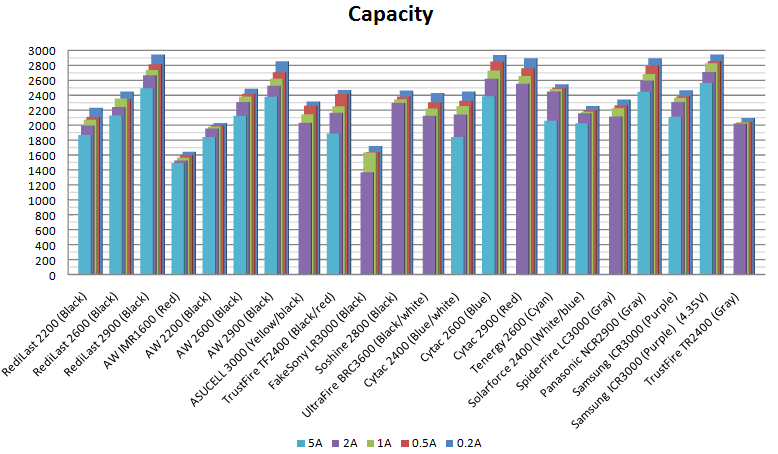
This chart show the average capacity of the tested cells.

This chart show the average energy of the tested cells.

In this chart I have taken the difference between 0.2 and 2 ampere energy bar and calculated the change in percent of total energy ((Energy@0.2A - Energy@2A) /Energy@0.2A). This high lights the difference on handling loads.
Physical dimensions
18650 batteries are not all the same size, they are supposed to be 18 mm in diameter and 65 mm long, but due to the added protection circuit they are up to 5 mm longer. These charts show the size of the largest of my test batteries (The difference is usual not more than 0.1 mm to 0.2 mm for a cell type).
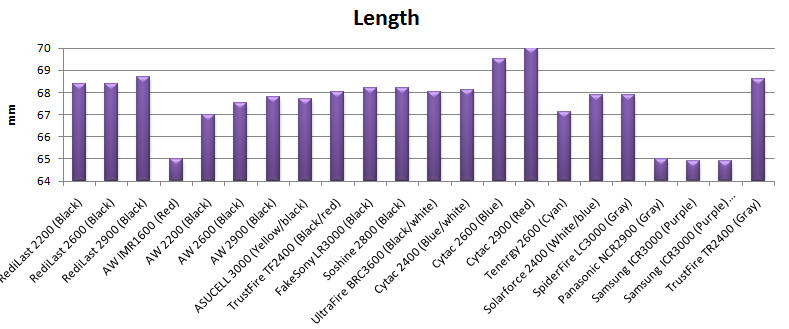
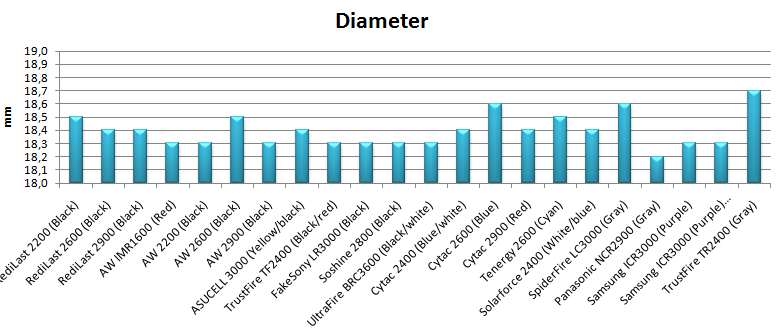
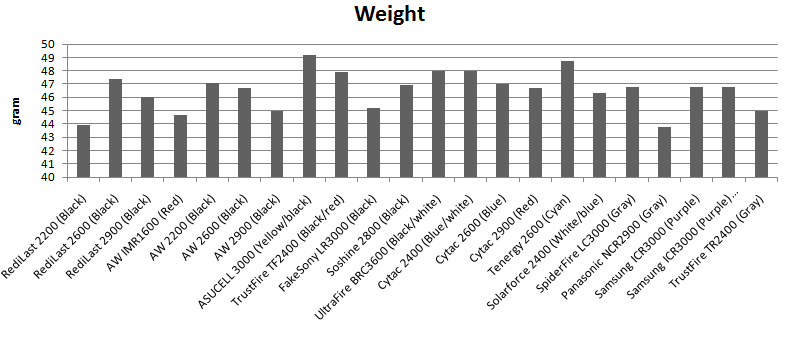
Combined discharge curves
These curves can be very hard to read, due to the many cells in one chart. When in doubt about which cell a specific curve is, use the charts under each cell to confirm the cell type.
0.2 ampere discharge
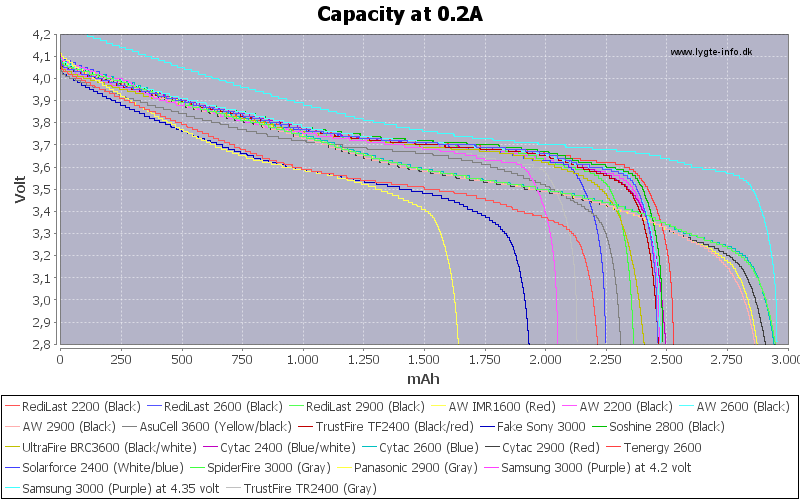
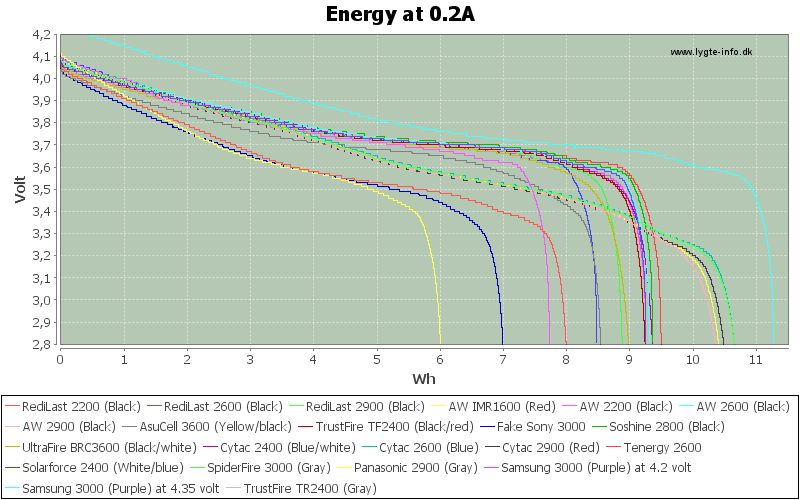
0.5 ampere discharge
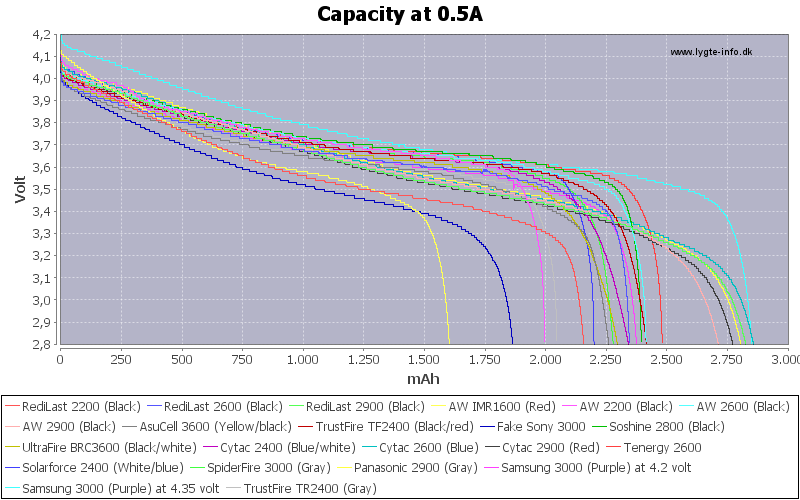
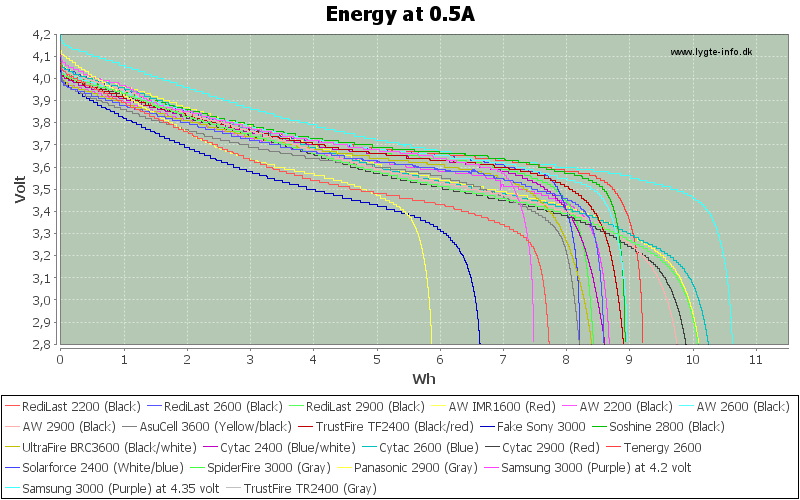
1 ampere discharge
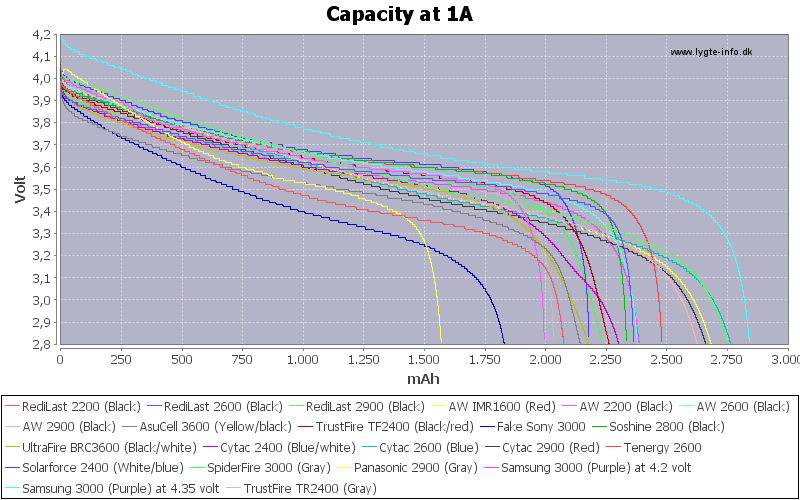
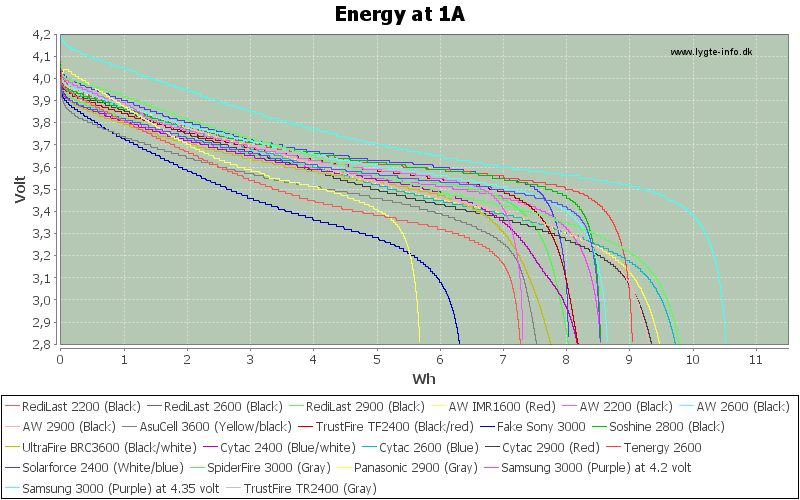
2 ampere discharge
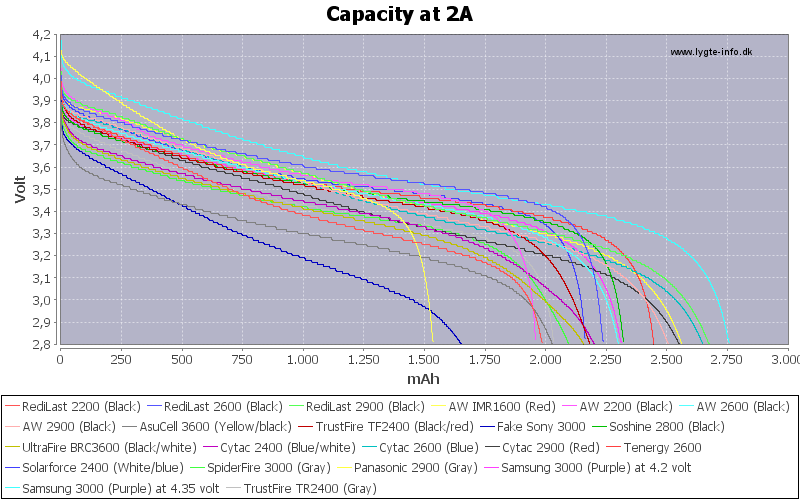
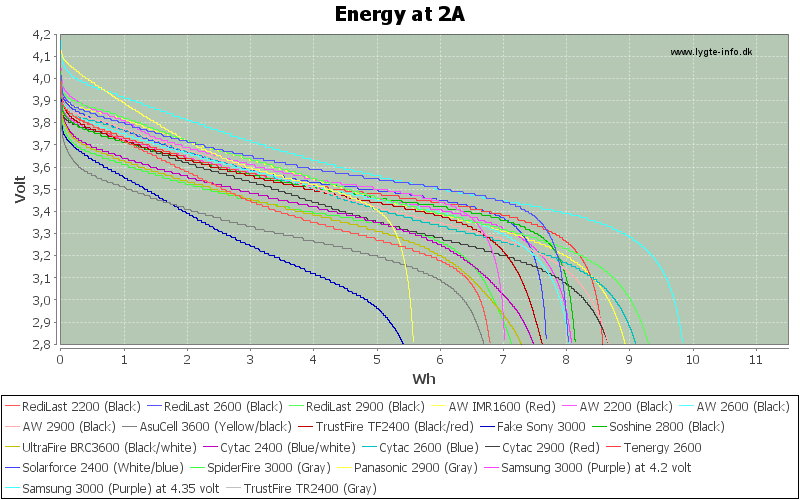
5 ampere discharge
Not all batteries can sustain 5 ampere discharge and few batteries are rated for it. Because some curves are missing the color of the curves are different from above.
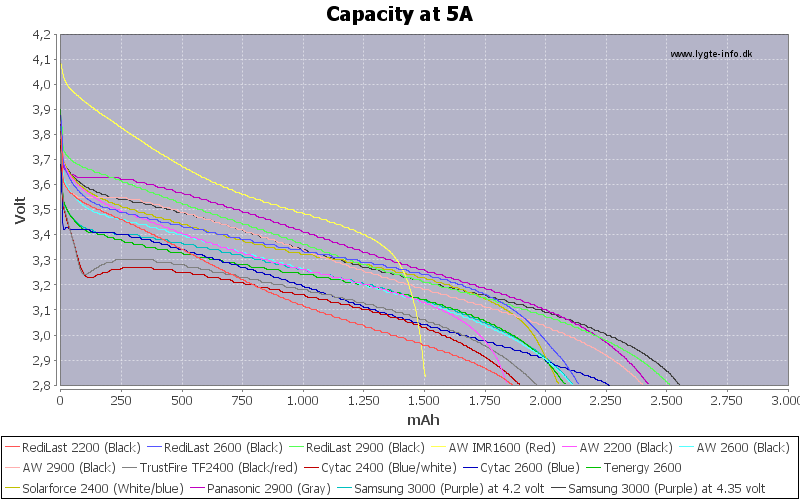
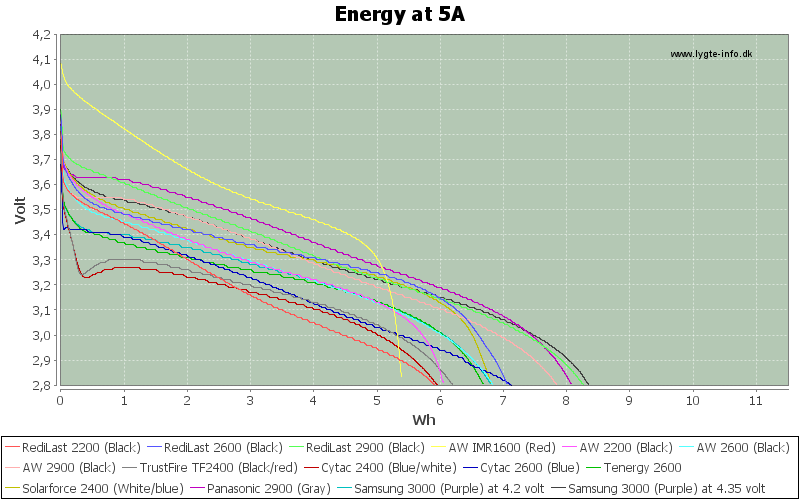
Curves and pictures for each cell
RediLast 2200 (Black)

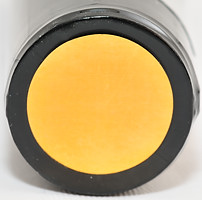


Specifications:
- 2200mAh Capacity
- Protected against: overcharge, overdischarge, short circuit
- Cell Made in Korea
- 4.20v±0.05 charge voltage
- 2.75v cut off voltage
- 3.6v Nominal voltage
- Charging type: CC/CV
- Max charge current: 1C (2.2A)
- Recommended charge current .5C
- Max discharge current: 4.4A
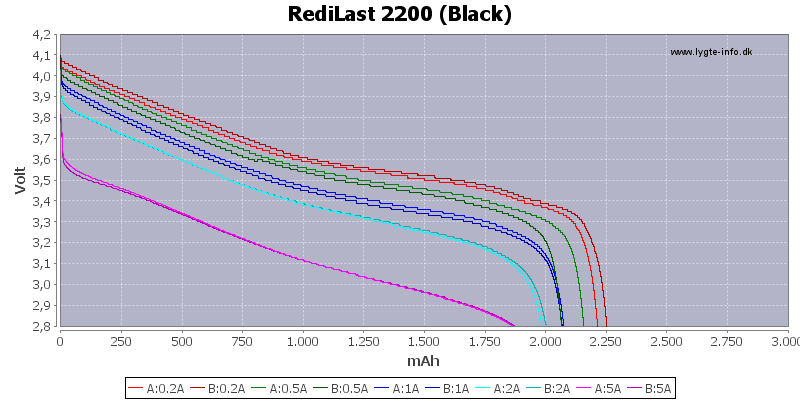
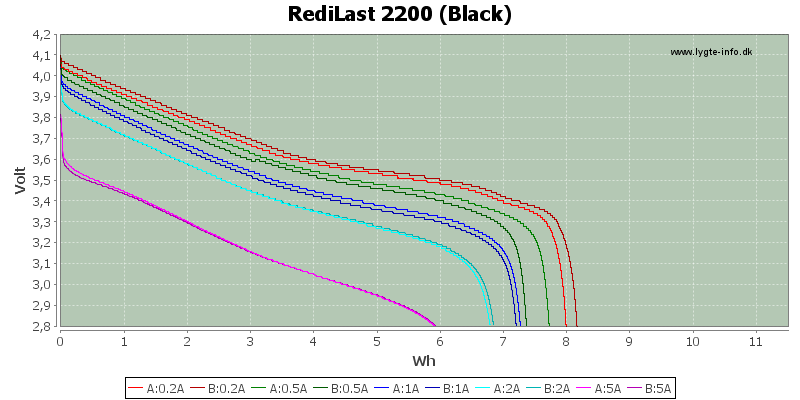
RediLast 2600 (Black)
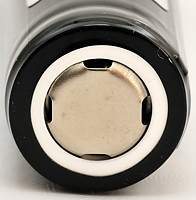
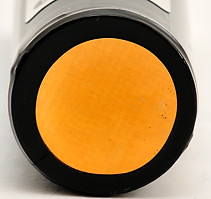


Specifications:
- 2600mAh Capacity
- Protected against: overcharge, overdischarge, short circuit
- Cell Made in Japan
- 4.20v±0.05 charge voltage
- 2.75v cut off voltage
- 3.7v Nominal voltage
- Charging type: CC/CV
- Max charge current: 1C (2.6A)
- Recommended charge current .5C
- Max discharge current: 5.2A
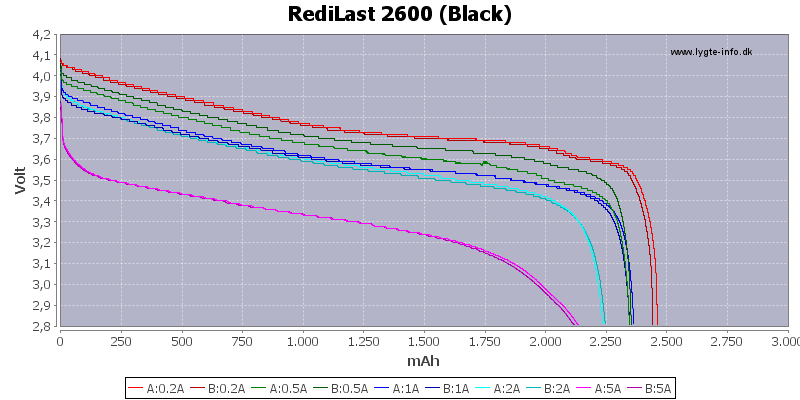
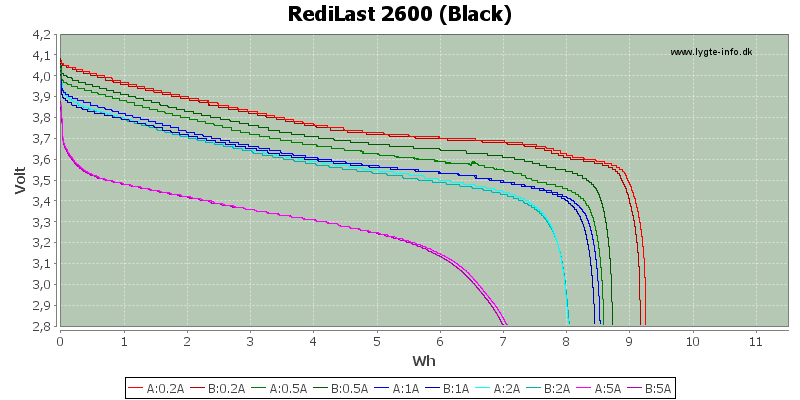
RediLast 2900 (Black)




Specifications:
- 2900mAh Capacity
- Protected against: overcharge, overdischarge, short circuit
- Cell Made in Japan
- 4.20v±0.05 charge voltage
- 2.50v cut off voltage
- 3.6v Nominal voltage
- Charging type: CC/CV
- Max charge current: 1C (2.9A)
- Recommended charge current .3C
- Max discharge current: 5.8A
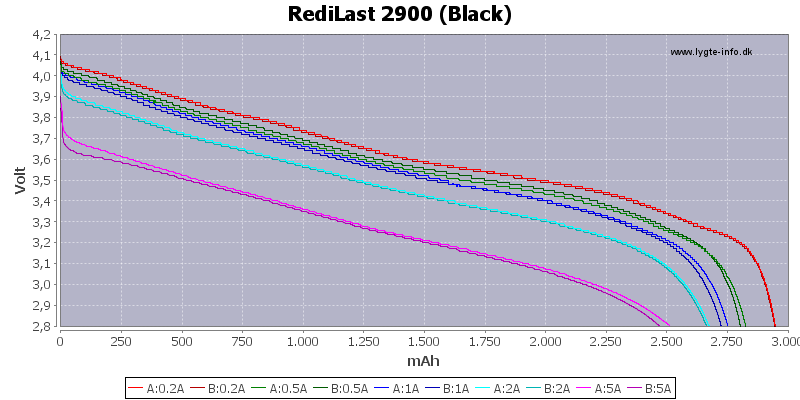
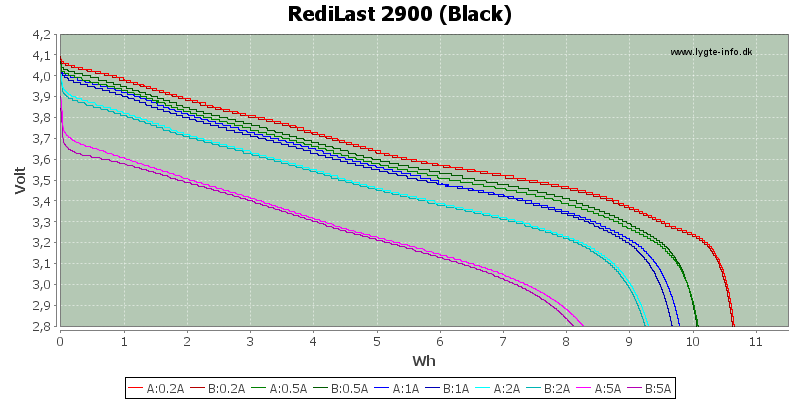
AW IMR1600 (Red)
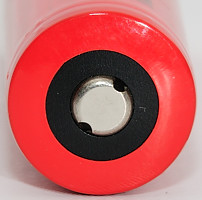
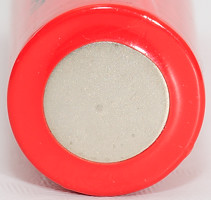


This cell may have a low capacity, but it can supply very high currents.
Specifications:
- Nominal Voltage : 3.7V
- Capacity : 1600mAH
- Lowest Discharge Voltage : 2.50V
- Standard Charge : CC/CV ( max. charging rate 4.5A )
- Cycle Life : > 500 cycles
- Max. continuous discharge rate : 10C
- Operating Discharge Temperature : -10 - 60 Degree Celsius
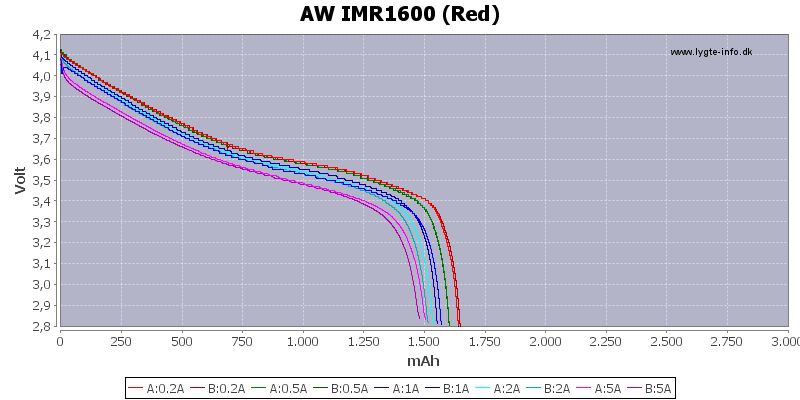
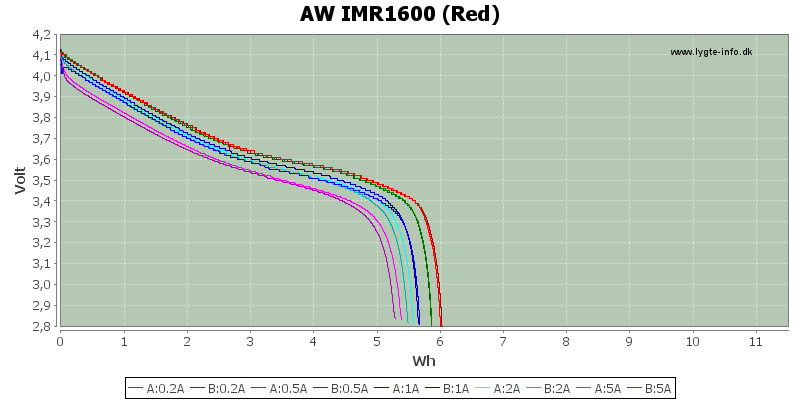
AW 2200 (Black)
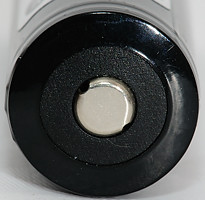
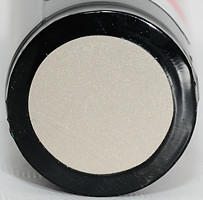


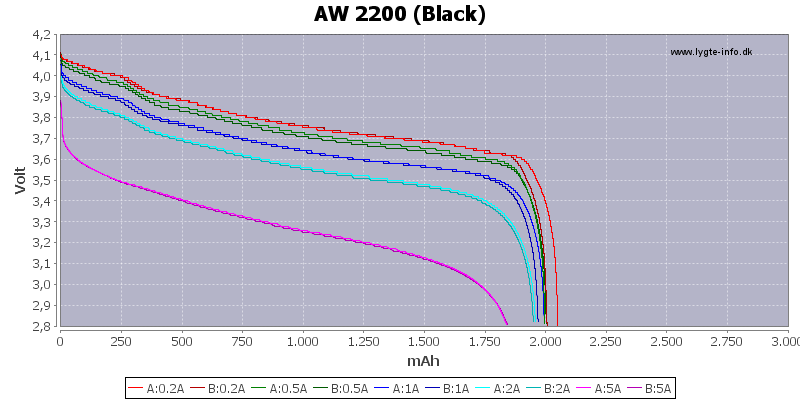
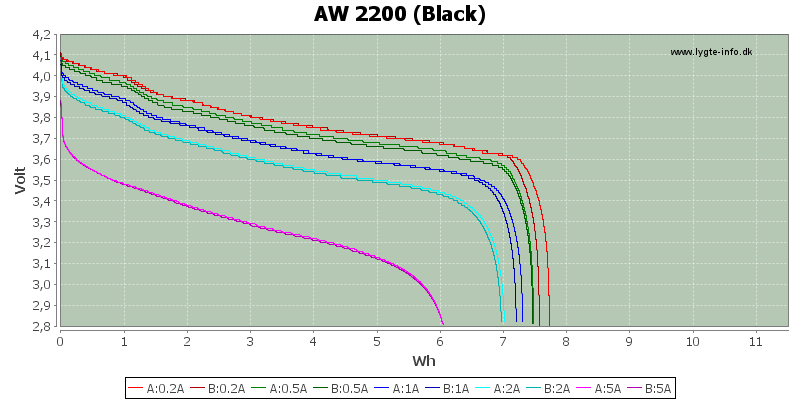
AW 2600 (Black)
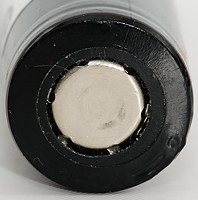
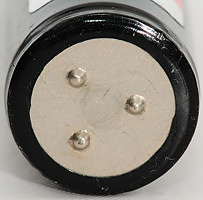


Specifications:
- Three triangulated raised dots ensure solid cell to cell connection when used in series.
- PCB protection against overcharge/ over discharge / short circuit.
- Safety vent with thermal cut off protection.
- Nominal Voltage : 3.7V
- Capacity : 2600mAH ( rated at 0.2C discharge 4.2V - 2.8V @ 25°C )
- Operating Temp. : Charge 0 to 45°C / Discharge -20 to 60 °C
- Max. Charge Rate : 2.6A ( ambient temp. 25 °C )
- Max. Discharge Rate : 5.2A ( ambient temp. 25 °C )
- Dimensions :18.52 X 68.16mm ( +/- 0.3mm )
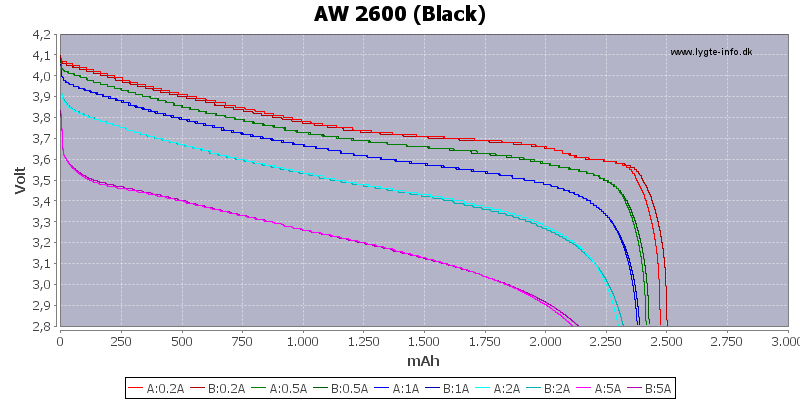
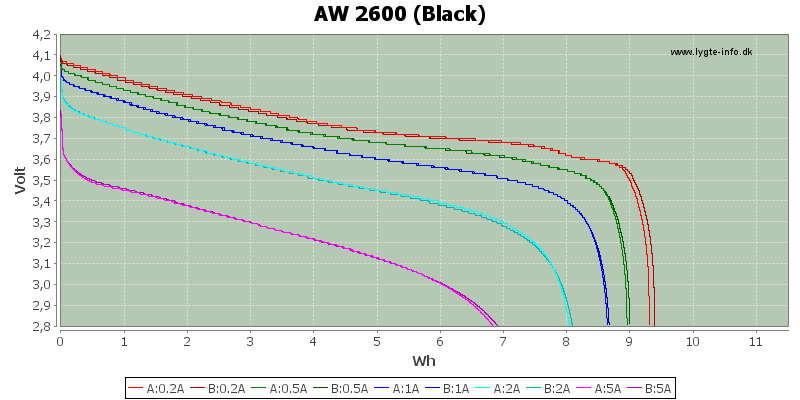
AW 2900 (Black)
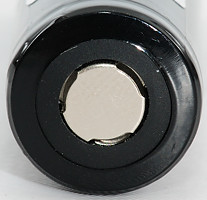
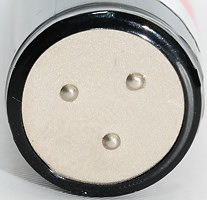


Specifications:
- Three triangulated raised dots ensure solid cell to cell connection when used in series.
- Uses Panasonic NCR-18650 LiNiCoO2 NNP cells.
- PCB protection against overcharge/ over discharge / short circuit.
- Safety vent with thermal cut off protection.
- Heat Resistance Layer (HRL) technology that forms an insulating metal oxide layer between the positive and negative electrodes. The layer prevents the battery from overheating even if a short circuit occurs.
- Nominal Voltage : 3.6V
- Capacity : 2900mAH ( rated at 0.2C discharge 4.2V - 2.5V @ 25°C )
- Operating Temp. : Charge 0 to 45°C / Discharge -20 to 60 °C
- Recommended Charge Rate : 825mA ( ambient temp. 25 °C )
- Max. Discharge Rate : 5.8A ( ambient temp. 25 °C )
- Dimensions :18.52 X 68.16mm ( +/- 0.3mm )
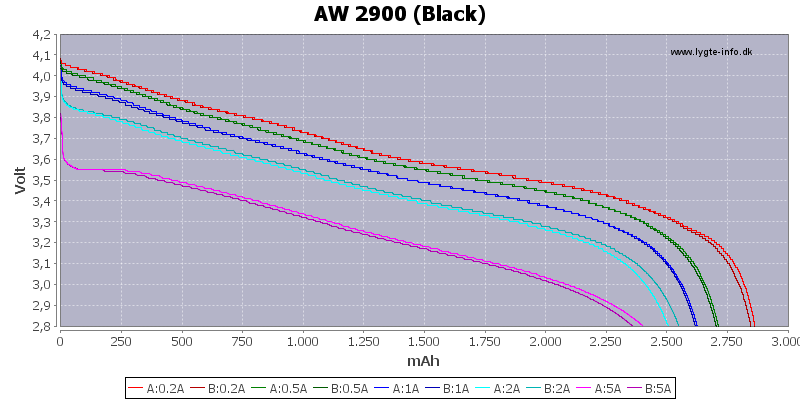
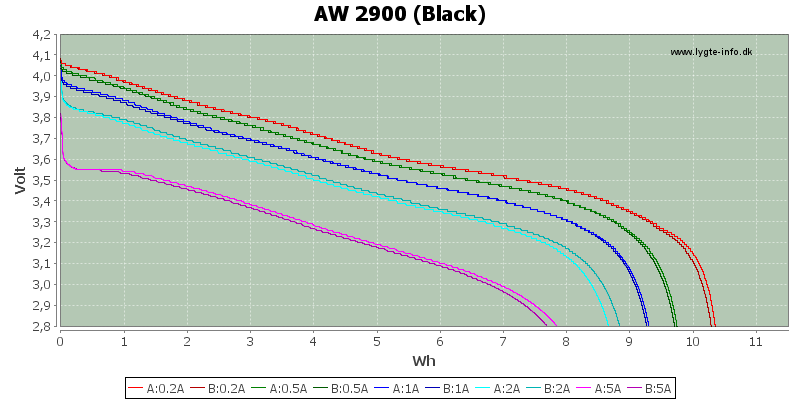
ASUCELL 3000 (Yellow/black)
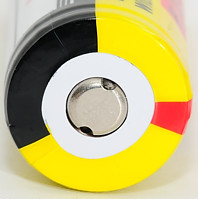
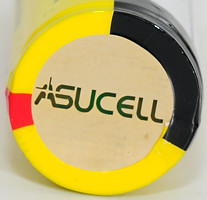



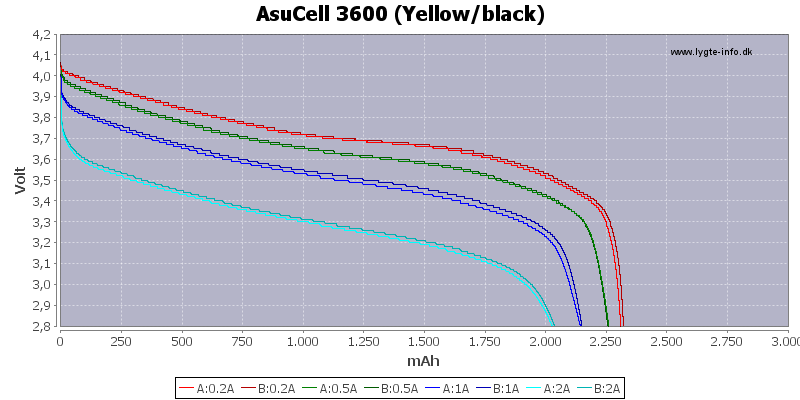
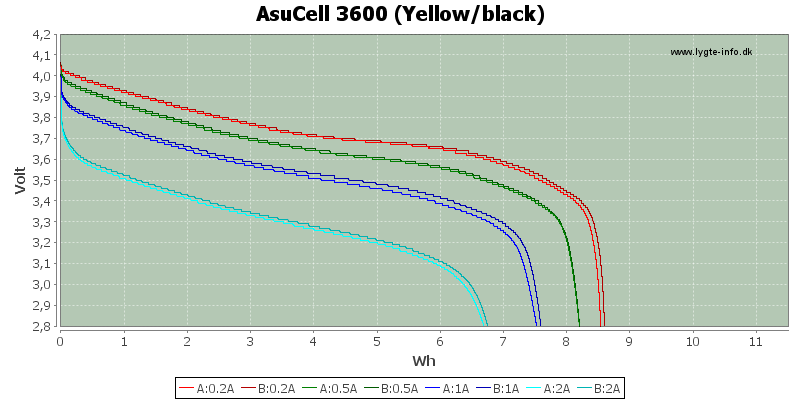
TrustFire TF2400 (Black/red)
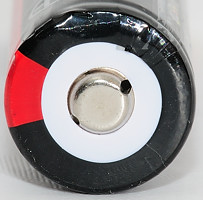
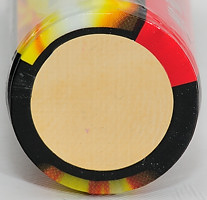



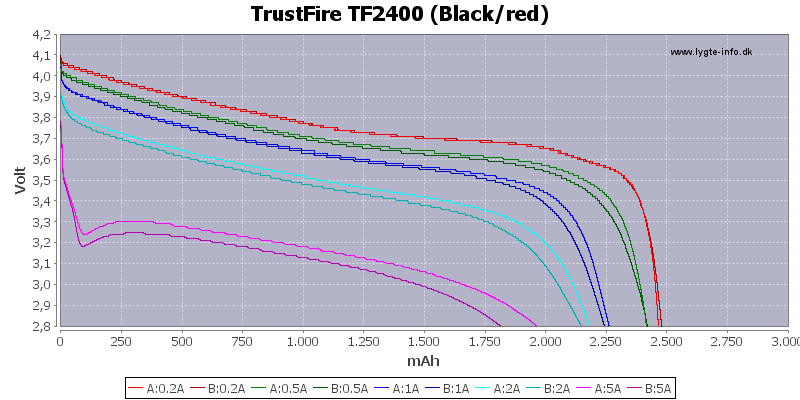
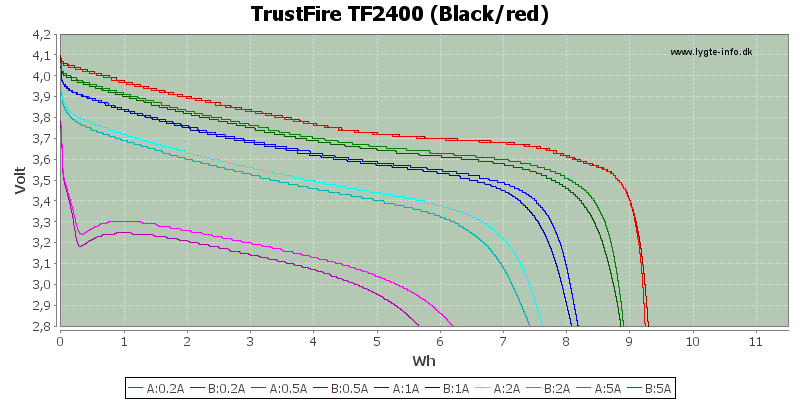
FakeSony LR3000 (Black)

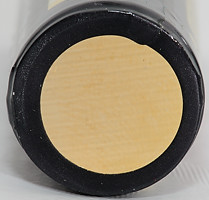



This cell combines all the worst parameters for a cheap cell:
1) Fake manufacture name
2) Large capacity variations
3) High internal resistance
It might be old cell or rejected cells that has got a new wrapper.
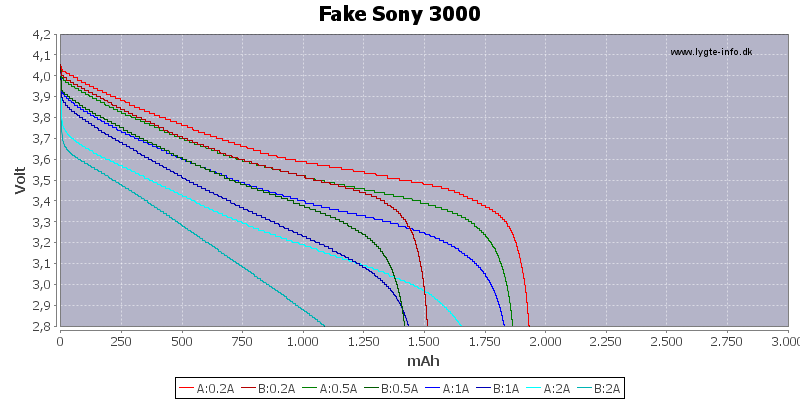
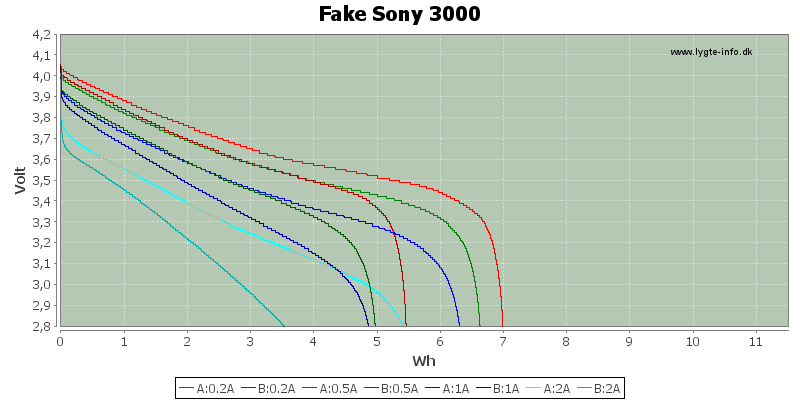
Soshine 2800 (Black)

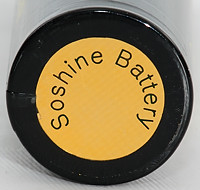



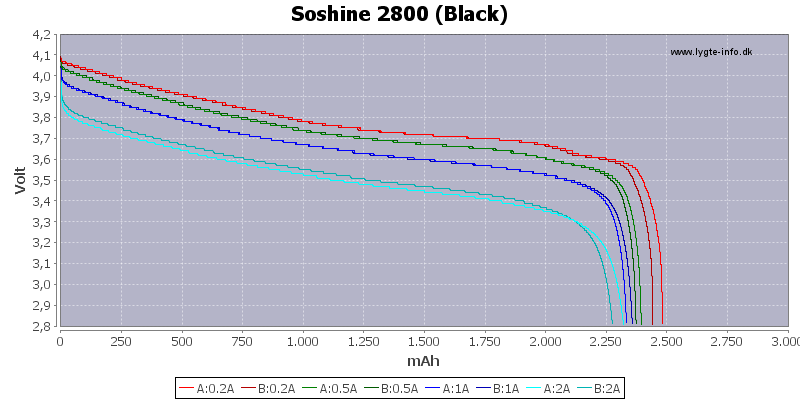
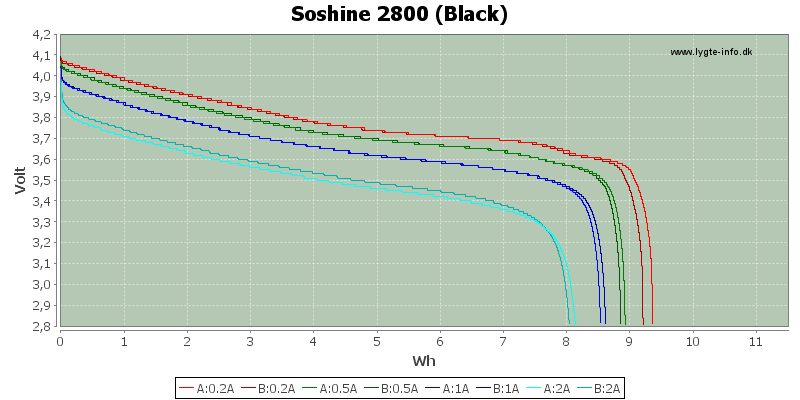
UltraFire BRC3600 (Black/white)
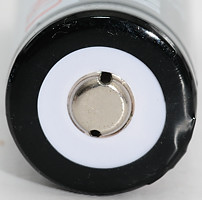




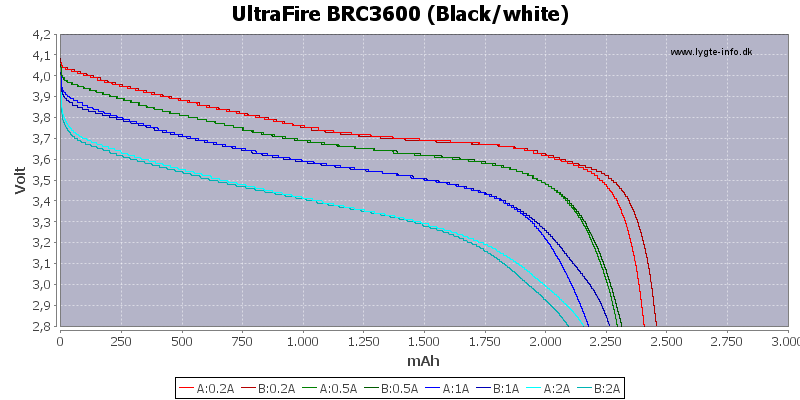

Cytac 2400 (Blue/white)
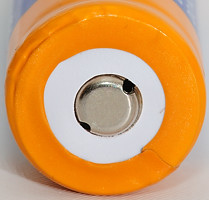
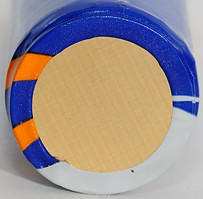



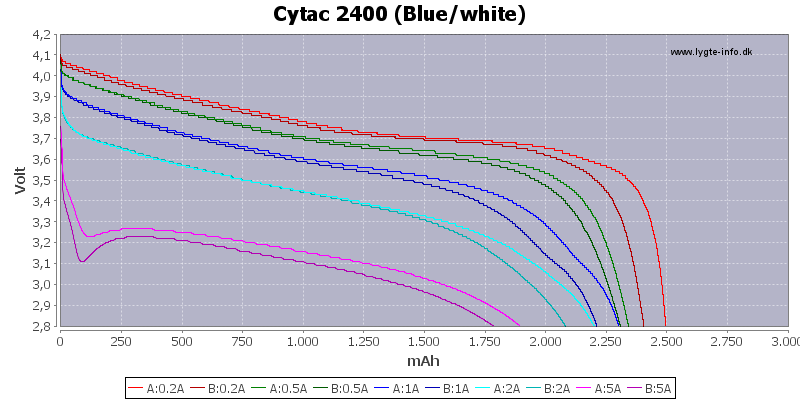
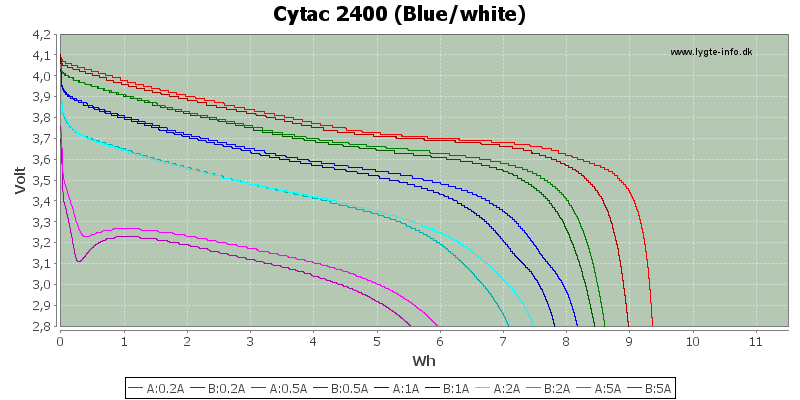
Cytac 2600 (Blue)

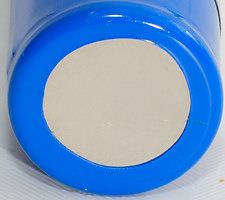



I have tested this cell in two batches and both has the same capacity, Cytac says this is because the cell are designed for high load and will show some extra capacity at low loads.
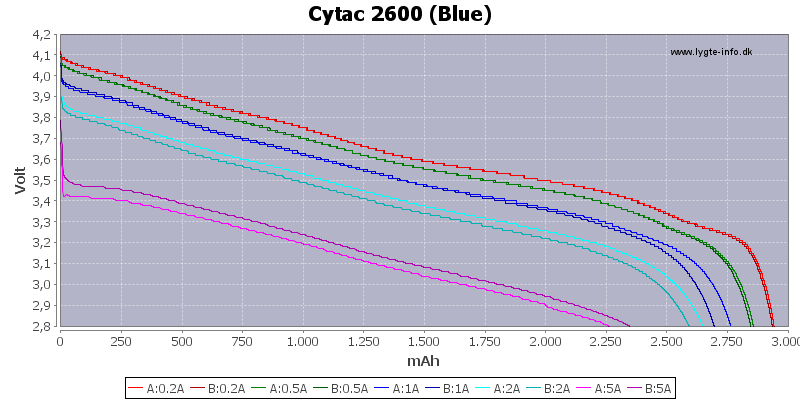
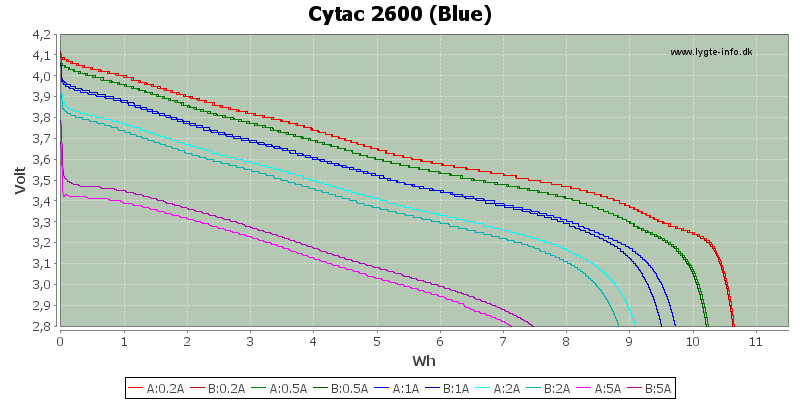
Cytac 2900 (Red)
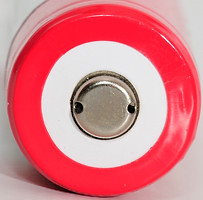
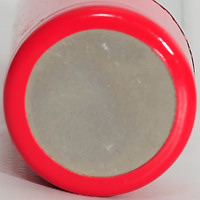


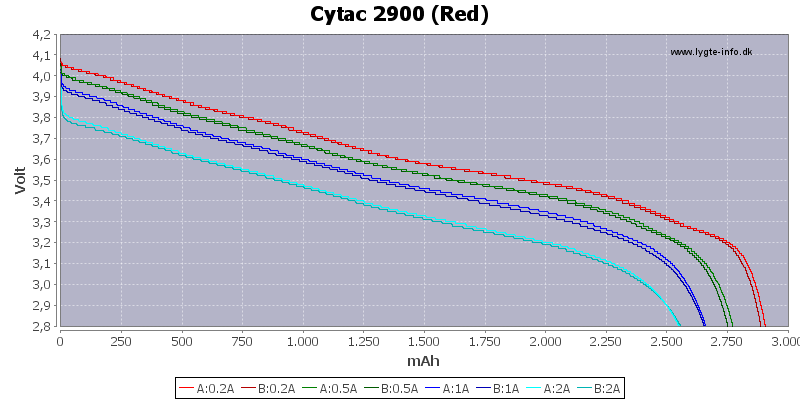
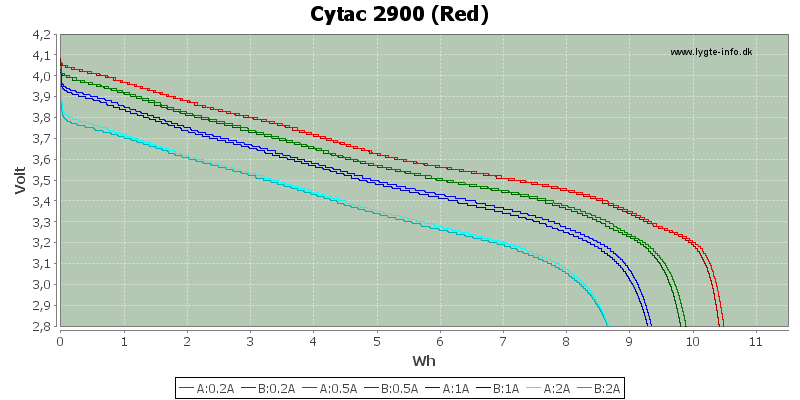
Tenergy 2600 (Cyan)
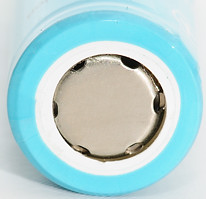




Specifications:
- Capacity: Nominal 2600 mAh, Minimum 2450 mAh
- Internal PCB protection prevents under-voltage at 2.5V and over-voltage at 4.25V. UNIQUE INTERNAL PCB!
- Dimensions: Diameter 18+/-0.2 mm, Height 67+/- 0.2mm
- Weight (Typical) Approx. 46 g yes
- Nominal Voltage: Average 3.7V
- Cut-off Voltage: 2.5V
- Internal Impedance: less or equal to 180 milliohm (with PTC)
- Cycle Performance: 90% of initial capacity at 400 cycles
- Cycle life: > 500 cycles
- Charge: Current = 0.5C mA Voltage = 4.2 V End Current = 0.01 mA
- Discharge: Current = 0.5C mA End Voltage = 3.0V
- Max. Charging current: 1.5C ma
- Max. Discharging current 1.5C ma (for continuous discharge)
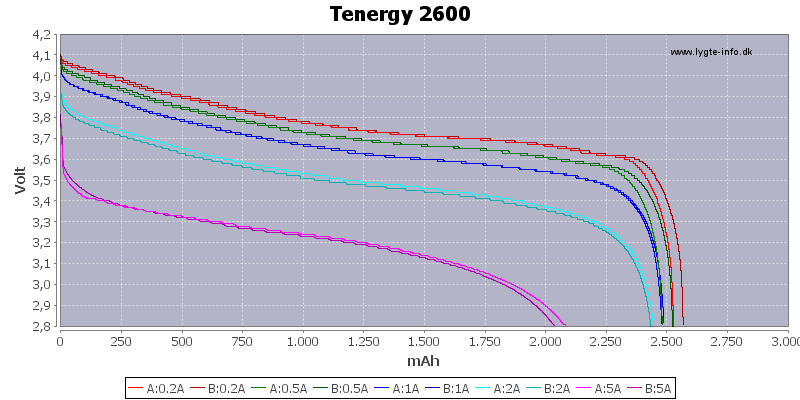

Solarforce 2400 (White/blue)
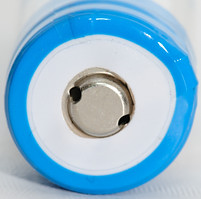




Specifications:
- Output voltage: 3.7V
- Capacity: 2400mAh
- Internal resistance: <120mohm
- Cut-off voltage protection: 2.5V
- Charging voltage protection: 4.3V
- Charging temp: 0 ~ 45 deg. Celsius
- Discharging temp: -20 ~ 60 deg. Celsius -
- Storage temp (one year): -20 ~ 60 deg. Celsius
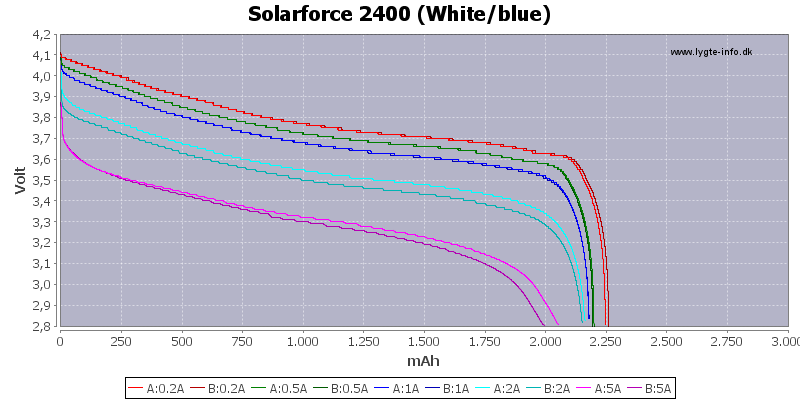
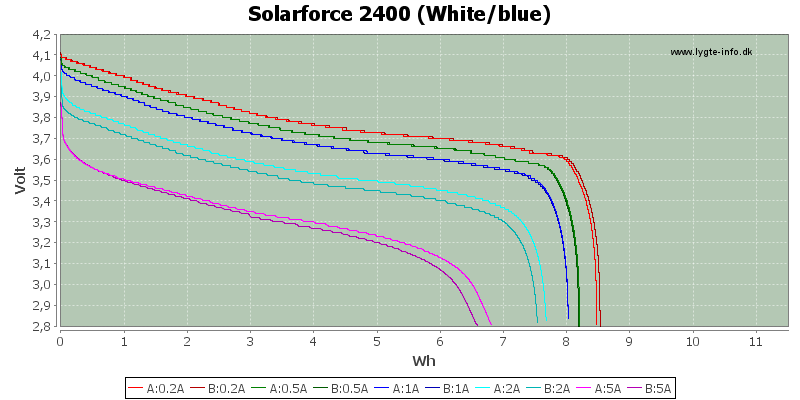
SpiderFire LC3000 (Gray)

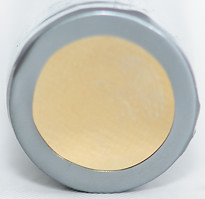



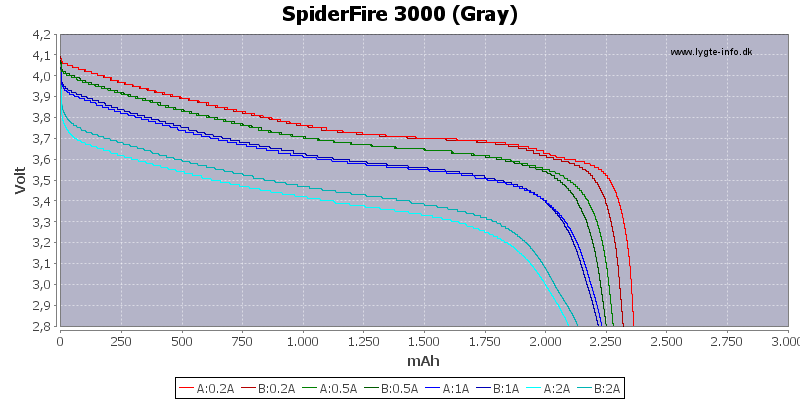
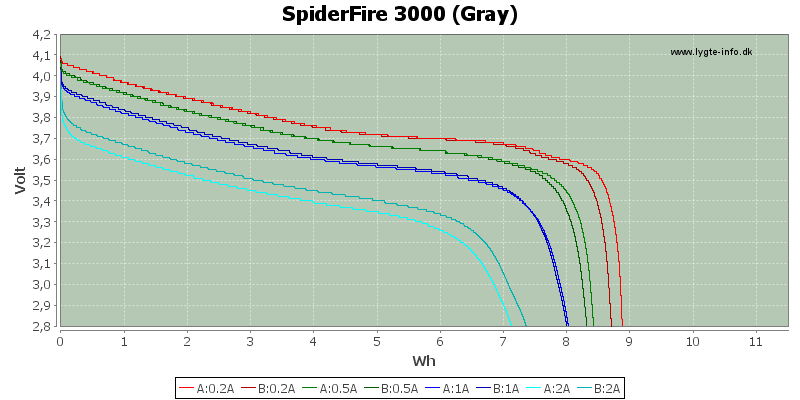
Panasonic NCR2900 (Gray)

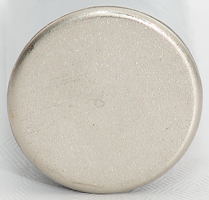





Samsung ICR3000 (Purple)
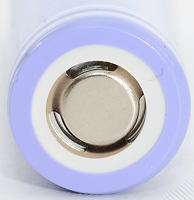



In the first two charts the cell is only charged with a normal LiIon charger, in the last two charts the cell is charged to full capacity using the CottonPickers charger.

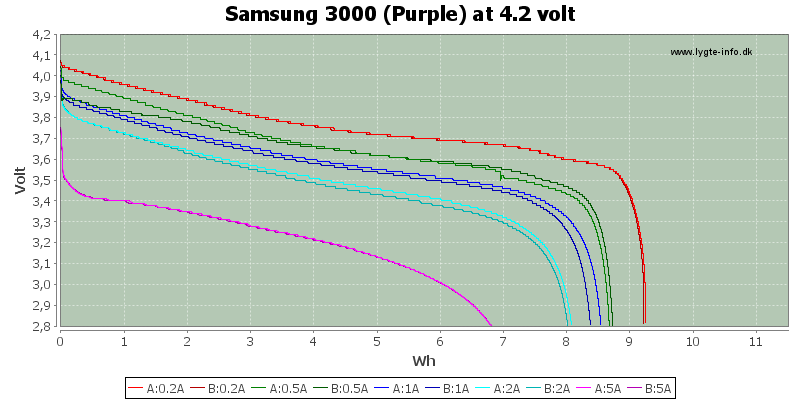
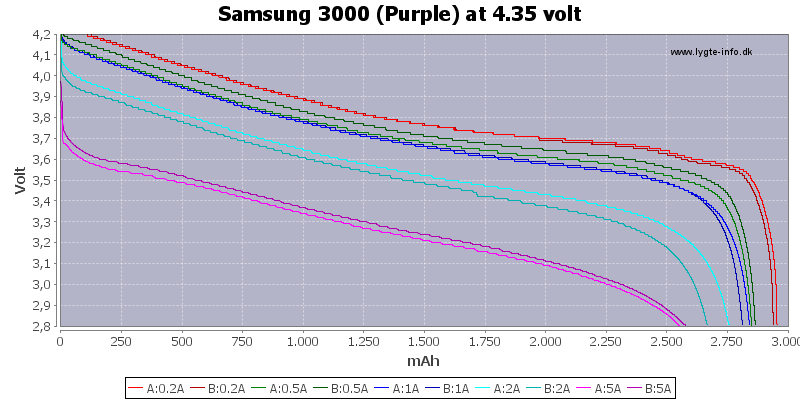
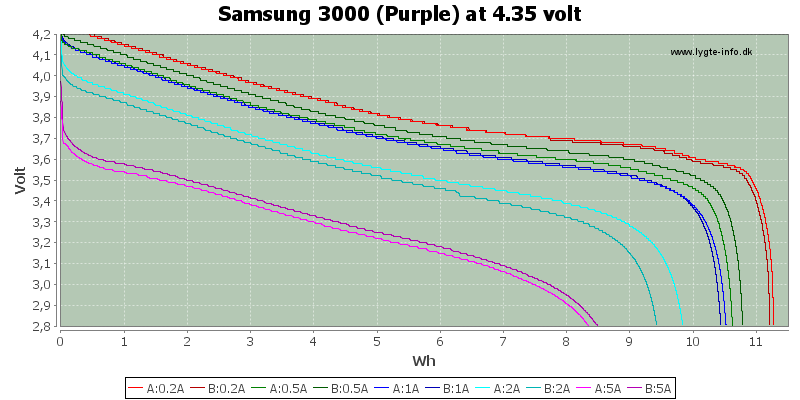
TrustFire TR2400 (Gray)
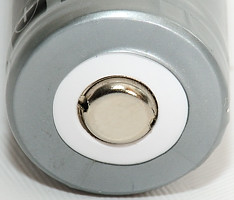
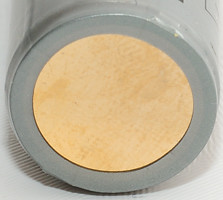




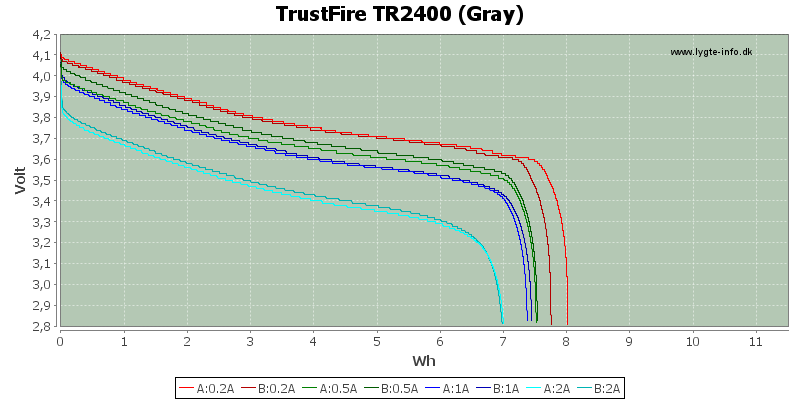
Sources
TH: Tactical HID
AW: AW on cpf
DX: DealExtreme
BJ: Battery Junction
HKE: HKEquipment
Notes
For all battery types I have tested two different cells, they are called A and B in the graphs. All cells have been charged on a hobby charger with half the marked capacity as charge current and the charge is stopped when the current is 1/10 of the charge current. I.e. if the battery is marked 3000mAh it is charged with 1500mA and the charge is stopped when the current is down to 150mA.
This charge method will not reach the maximum capacity of the batteries, there might be space for a few mAh more. Batteries that are marked with too high capacity will be penalized with this charging method.
When I only use one curve for a battery, it is the curve from battery A.
All the discharging is done on a CBA and I frequently verify that the reading from the CBA matches readings taking with a voltmeter directly over the cell.
Both capacity and energy is done in one discharge, capacity is a summation of the current, energy is a summation of current*voltage.
Cytac batteries were supplied by Cytac for a review.





























































































































































